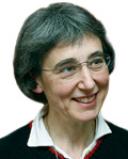Child Development
At First Sight: Gaining Sight as an Adult
It's harder than you think.
Posted February 10, 2022 Reviewed by Lybi Ma
Key points
- Gaining sight in adulthood is extremely challenging causing many to reject their new vision.
- Most of us grasp the gist of a scene in a single glance; the newly sighted see a hodgepodge of lines and color patches on one flat plane.
What would it be like to see for the first time after a childhood of blindness? Would it bring you untold wonder and joy? Almost a century ago in Germany, Marius von Senden decided to find out. Cases of sight recovery past early childhood are extremely rare. But by scouring newspapers and the scientific and medical literature, von Senden amassed information on 66 cases. He put all his research and thoughts into one grand book, but almost all copies were lost when the publishing house was bombed during the Second World War. Yet, the book resurfaced, in England, thanks to Silvia Schweppe of the British Museum who asked von Senden in 1954 for permission to translate the manuscript into English. It took six years, but Space and Sight: The Perception of Space and Shape in the Congenitally Blind Before and After Operation was finally translated and published.
This book is hard, but not impossible, to find. I obtained a copy about 10 years ago and learned that sight recovery is not as joyful and wondrous as one might think. To the newly sighted, the ease with which most of us use our eyes to interpret the world is staggering. Following a single glance, we grasp the gist of the scene before us. Where we see a three-dimensional landscape full of objects and people, a newly sight adult sees a hodgepodge of lines and patches of colors appearing on one flat plane. As von Senden wrote, “The process of learning to see in these cases is an enterprise fraught with innumerable difficulties, and the common idea that the patient must necessarily be delighted with the gifts of light and colour bequeathed to him by the operation, is wholly remote from the facts.”
Since the publication of von Senden’s book, there have been additional reports of adult sight recovery, some, such as the case of SB reported by Richard Gregory and Jean Wallace and the story of “Virgil” described by Oliver Sacks, have ended sadly, but a few others, such as the cases of Michael May and the children of Project Prakash, have a more optimistic note.
I was very curious in 2010 to meet a young man, practically blind from birth, who gained sight at the age of 15, and, though initially overwhelmed by his new sight, has learned to make good use of his vision. As should be clear from the book’s subtitle, Liam’s story is one of two major stories I tell in Coming to Our Senses: A Boy Who Learned to See, A Girl Who Learned to Hear, and How We All Discover the World. Researching and writing this book has given me new information and ideas which I plan to share in forthcoming posts.


